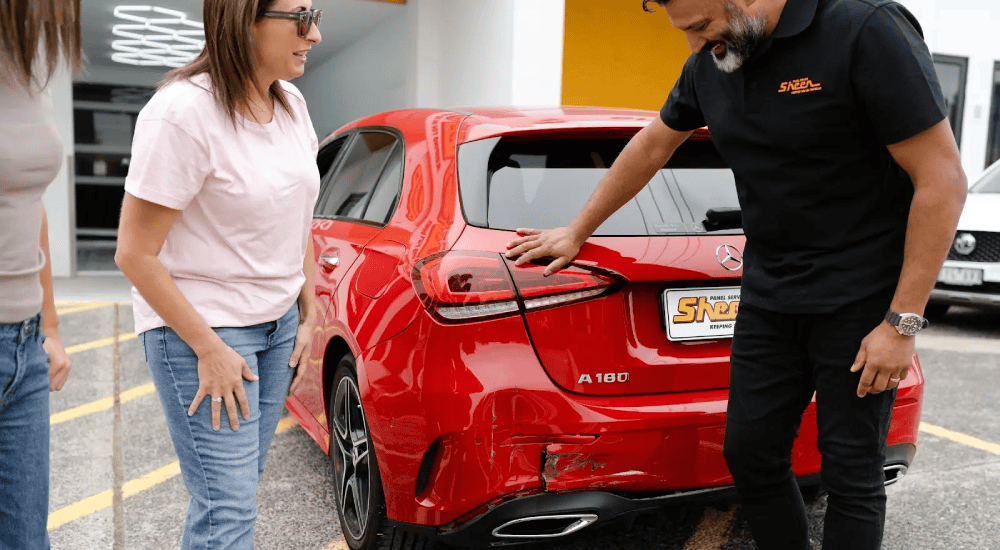Sheen Resources
.webp)

Switching car insurance policies is an important step in protecting your vehicle, your wallet, and your peace of mind. Whether you're fed up with sky-high premiums or frustrated with limited cover, switching to a different insurer can potentially save you hundreds—or even thousands—of dollars. But with confusing terms and fine print in every contract, many people delay making a move.
At Sheen, we want to make it easier for Melbourne drivers to understand their options. Whether you're switching car insurance mid-policy or your current policy is about to expire, this report will help you identify what to look out for and things to consider when changing insurers.
Why switch car insurance policies?
Car insurance is not one-size-fits-all. Your driving habits, location, claims history, and vehicle can all impact your premiums and coverage.
According to the Insurance Council of Australia, the total number of claims in 2024 in Victoria increased by 70%, and the value of those claims increased by 188% in real terms. Yet many drivers remain underinsured or stuck in outdated policies that don’t reflect their current needs. That’s why it’s essential to review your policy regularly and switch insurance policies in Melbourne if your current cover is no longer suitable.
Key reasons to switch include:
- You’ve found a better deal elsewhere
- Your personal circumstances have changed
- Your insurer doesn't offer preferred repairer choice
- You’re unhappy with the claims process or customer service
Switching car insurance can offer improved service and better value. And with the right timing and guidance, it’s easier than you think.
How do you switch car insurance policies?
Changing car insurance policies is pretty straightforward. All you have to do is cancel one policy and start another. Still, there are a few pitfalls you should be careful to avoid.
Confirm your cancellation
If you don't notify your current insurer that you want to cancel your existing policy, they'll automatically renew your contract. The best way to cancel your policy is by doing it in writing. With email receipts you'll have proof of your decision, in case something goes wrong.
Timing is everything
One of the trickiest things about switching car insurance policies is getting the timing right. You don't want to leave a gap between policies during which your car is uninsured. Stay on the safe side, and don't cancel your old policy until you've got a new one lined up.
Shop around
Not all car insurers are equal, and not all of their policies guarantee the same level of protection. Before you switch car insurance, shop around and find out what your options are.
How to switch car insurance mid-policy
Switching your car insurance mid-policy is possible, even if you’re not at your renewal time. Many people assume they need to wait for the end of their policy, but that’s not the case.
Check your existing policy
Read the Product Disclosure Statement (PDS) and Target Market Determination (TMD) from your current car insurance provider. This will help you understand the terms around cancellation, including whether your provider may deduct any outstanding monthly payments or charge a cancellation fee.
Line up your new policy
Make sure your new policy starts before you cancel your cover. This avoids any gaps in your car insurance cover. Be ready to provide details of your new vehicle, such as the make and model, start date, and any additional drivers.
Compare the coverage you need from different insurance companies. Don’t just look at price—check inclusions like roadside assistance, hire cars, and whether you can choose a preferred insurance repairer.
Cancel your policy in writing
To avoid being charged another insurance premium cycle, you’ll need to contact your previous insurer in writing. Ask for a currency certificate and information on cancelling the policy. Keep email records to show that you cancelled.
Most providers offer online cancellation of car insurance. Look for the section that allows you to manage your current policy details or cancel your cover.
What are the different kinds of car insurance?
Understanding what you’re switching to is just as important as understanding what you’re leaving behind. Here’s a breakdown:
Compulsory third party (CTP)
Mandatory for all vehicles, but doesn’t cover damage to your car or property—just injuries to other people. It’s managed through your state’s transport authority and is often included in your registration fees.
Third party property
Covers damage you cause to other people’s property, but not your own. It’s a basic form of cover that’s more affordable than comprehensive car insurance, making it ideal for older vehicles or drivers on a tight budget.
Third party fire and theft
Includes everything from third party property, plus cover for fire damage or if your car is stolen. It’s a solid option if you’re not ready for comprehensive car insurance but still want added protection beyond the basics.
Comprehensive car insurance
It covers your car and other property, as well as fire, theft, and weather-related events. It also typically includes the option to choose your own repairer, like Sheen, and access benefits like accident replacement vehicles.
Are you getting a good deal?
When you're looking to switch, take time to compare:
- The new premium vs your current policy
- Whether there are any discounts for new customers
- Inclusions like roadside assistance or windscreen replacement
- Whether choosing a higher excess will reduce the cost
- If the insurer allows you to nominate your preferred insurance repairer
Sheen’s network of panel beaters can work with a range of car insurance providers and ensure your vehicle is restored to pre-accident condition using genuine parts.
Make sure your new insurer doesn't skimp on repairs
Some insurers insist on controlling who does the repairs on your car. Sure, that's great for the car insurer—they can save themselves money by contracting a mechanic who uses cheap parts and does low-quality work—but it could spell trouble for you.
.webp)
That's why you should ensure you get the preferred choice of repairer on your new car insurance policy. Repairers like Sheen perform quality repairs with genuine parts and paints. Plus, unlike many insurer-preferred repairers, Sheen gives you the choice of a replacement vehicle if you've had an accident.
FAQs about switching car insurance policies
Will switching car insurance affect my No Claim Bonus (NCB)?
Most general insurance companies will honour your No Claim Bonus when you want to switch, provided you can supply evidence of your history. Make sure to request a certificate of insurance or NCB statement from your old insurer when you cancel.
How do I know if my new insurer lets me choose my own repairer?
This detail is usually outlined in the Product Disclosure Statement (PDS) under claims and repairer choice. If repairer flexibility is important to you, confirm this directly with your new provider.
What happens if I switch after I’ve made a claim?
If you’ve claimed for a total loss or any other incident during your existing policy, you can still switch insurers, but you may not receive a full refund. The process may vary depending on your provider, so check with them before you make the switch.
What details do I need for my new policy?
You’ll need to provide details of your new vehicle, such as the make and model, registration, and driving history. Some providers also require proof that your previous policy is cancelled. Keep a certificate of currency from your old insurer as a backup.
Contact Sheen for insurer-approved repairs
Get top-notch repairs to match your fantastic new insurance policy. Sheen has multiple locations across Melbourne, and our workmanship comes with a lifetime guarantee. Contact us today for more information on being your repairer of choice. Whether you’ve just switched insurers or are weighing your options, we ensure your vehicle is in the best hands.
[nearest_workshop][/nearest_workshop]

.png)


.webp)
















